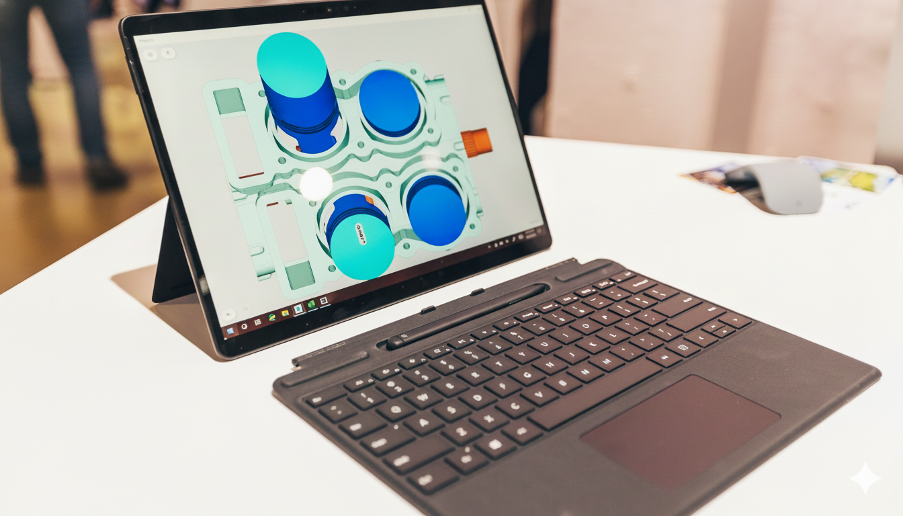Why the Future of Tablets Is Powered by ARM Chips: What You Need to Know

The tablet market's technological base is going through a big change. It is clearly trending toward processors that use the ARM architecture.
This tendency is not random; it is a planned progression that is needed to have the right mix of performance, power efficiency, and thermal management that is needed for mobile devices.
Tablet companies, from the biggest names in consumer electronics to developers of specialized industrial devices, are more and more dedicated to ARM-based System-on-Chips.
This article looks at the main benefits that are pushing this change in architecture and what it means for the future generation of portable computers.
Comparing RISC vs CISC: The Advantages That Are Fundamental
Because ARM uses a design idea called Reduced Instruction Set Computing, the company is now the market leader. The Complex Instruction Set Computing architecture that most standard x86 computers use is different from the RISC design, which uses a simpler and more streamlined set of instructions. Because they are made to be efficient, ARM chips can do our work while using less power.
When this design style is employed, the processors are much simpler and smaller. This directly lowers production costs and makes the product take up less space.
This simplicity is a significant bonus for engineers when it comes to compact, fanless devices like tablets, since it makes more room for other crucial pieces, such as batteries.
Getting More Power Efficient
Because it consumes less power, ARM has gained a lot of popularity in the computer industry. The RISC architecture allows the chip to consume a significantly lower amount of power, particularly while it is not performing any tasks. This is of utmost significance for electronic devices that will be utilized throughout the day while on the move.
Tablet consumers continue to place a high importance on having a battery life that is longer. Users of ARM-based devices do not need to constantly worry about their batteries dying because these devices may operate for extended periods of time without requiring charging.
Tablets may continue to function well even when not actively cooled by fans or other means, thanks to the reduced heat generated by the reduced power consumption. The result is sleeker, less noisy designs.
We Look at How Efficient and Thermally Balanced Anything Is
There are new ways to get people engaged in digital entertainment, like apps, online contests, and live events. These are all ways to get people involved.
Tablets with ARM processors do these things easily, so gaming and streaming are snappy and fluid. But much as people want fast hardware, they also need to find reliable online platforms that make sure their digital experiences are safe and fair.
For example, people who want to play real online pokies should only go to sites that are approved and give them correct information, clear instructions on how to play, and reliable performance.
Platforms that people trust not only keep user data safe, but they also make sure that games run easily on ARM-based devices, which are stable, fast, and set up to give users the best experience.
ARM processors are being used in more and more screens because companies can buy the design and make their own chips. So the CPU can be customized for the operating system and the jobs the device will be used for, this feature lets hardware and software work together very closely.
Custom Silicon and Deep Integration Capabilities
The capacity to accurately modify the parameters of performance and power consumption throughout the design process is now available to major technical enterprises since they can design their own unique chips based on ARM’s instruction set architecture.
The individualized approach to silicon engineering is the driving force behind the advancements in artificial intelligence and machine learning capabilities that are being implemented on devices.
These innovations include the integration of specialized neural processing units directly into the system-on-chip for the purpose of performing AI activities in a quick and effective manner without relying heavily on the cloud.
Because of the freedom to customize the entire platform, from the instruction set to the finished product, the ARM architecture is becoming increasingly established as the basis for the development of future tablet innovations.

Jim's passion for Apple products ignited in 2007 when Steve Jobs introduced the first iPhone. This was a canon event in his life. Noticing a lack of iPad-focused content that is easy to understand even for “tech-noob”, he decided to create Tabletmonkeys in 2011.
Jim continues to share his expertise and passion for tablets, helping his audience as much as he can with his motto “One Swipe at a Time!”
